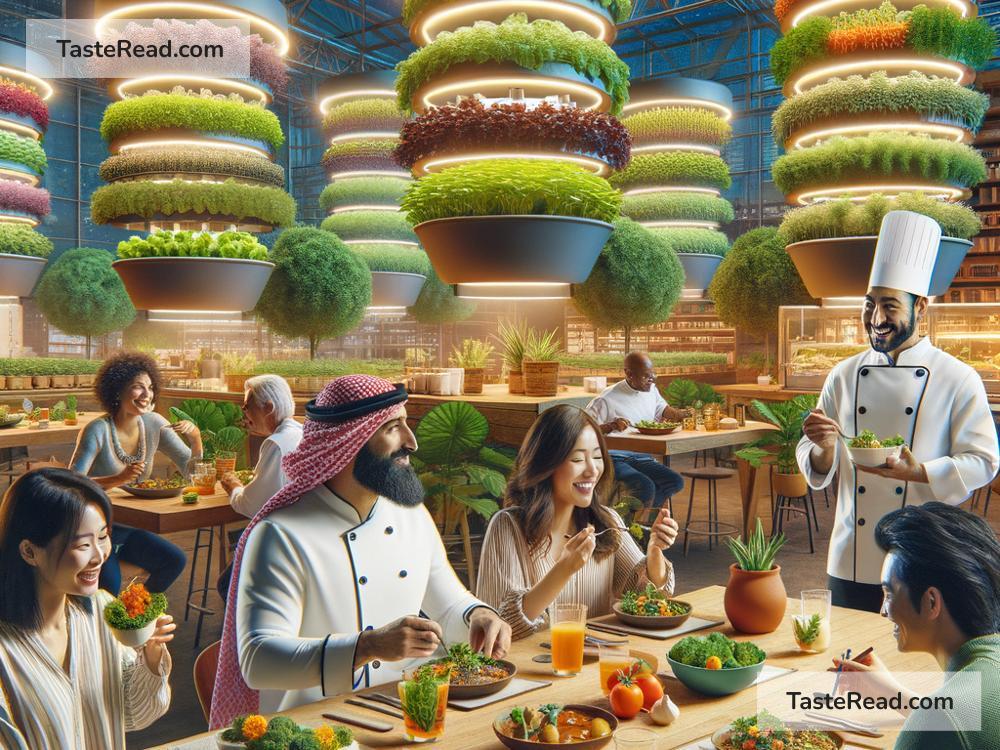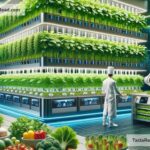The Future of Food and Sustainable Global Collaboration
Food is something that connects all of us. It nourishes our bodies, brings cultures together, and shapes our shared experience as humans. But as the global population grows and climate change affects agriculture, the question arises: What does the future of food look like? To tackle this challenge, we need creativity, innovation, and, most importantly, international teamwork.
Current Challenges in the Food System
Right now, the world’s food system faces serious problems. First, there’s the issue of food security. Over 800 million people today lack enough food to live healthy lives, and the numbers are only increasing in some areas. At the same time, as populations grow, we’ll need to produce more food—estimates suggest we’ll need 70% more food by 2050 to feed everyone.
Second, climate change is making farming harder. Rising temperatures, droughts, and floods are destroying crops and reducing yields. This makes it harder for farmers to grow food, especially in poorer countries.
Third, agricultural practices today also harm the environment. Cutting down rainforests to create farmland has led to deforestation, decreasing biodiversity. Overusing chemical fertilizers and pesticides pollutes soil and water. Meanwhile, food production generates immense greenhouse gas emissions, contributing to global warming.
Beyond that, inequality in food access is another problem. While some people throw away food, others go hungry. This imbalance shows that it’s not just about growing enough food—it’s also about distributing it fairly.
Innovation: What Could the Future of Food Look Like?
Solving these issues means rethinking how we grow, distribute, and consume food. Luckily, exciting innovations are already paving the way.
One promising idea is vertical farming. Instead of growing crops in fields, food can be grown indoors in stacked layers using controlled environments. Vertical farms use less land and water and can grow crops year-round. This is great news for urban areas, where farmland isn’t available. Advances in hydroponics and aeroponics—methods of growing plants without soil—are helping make this system more efficient.
Another exciting technology is lab-grown meat. Scientists have figured out how to produce meat in labs without raising and slaughtering animals. This “cultured meat” reduces the environmental impact of animal farming, cuts down on greenhouse gases, and avoids ethical concerns tied to traditional meat production. Companies like Impossible Foods and Beyond Meat are already offering plant-based alternatives to popular meat products.
We’re also turning to ancient practices like using seaweed and algae as food sources. These superfoods grow quickly, don’t require fresh water or farmland, and are packed with nutrients. They could become staples in future diets.
Additionally, advances in genetically modified organisms (GMOs) allow scientists to create crops that are resistant to drought, pests, and disease. Some GMOs can also be enriched with extra vitamins, improving nutrition for people in need.
Finally, reducing food waste will play a powerful role in the future of food. Using apps and tools to better track expiration dates, repurpose leftover food into new meals, or redistribute surplus food to those who need it can make a big difference.
Collaboration for a Better Food Future
Innovation alone isn’t enough—we need global collaboration. Food production involves farmers, scientists, governments, companies, and consumers. To make the food system work sustainably, these groups will have to work together.
First, governments and international organizations like the United Nations can lead the way by setting guidelines and policies. For example, they can encourage sustainable farming practices, invest in research for climate-resistant crops, and support campaigns to reduce food waste.
Second, sharing knowledge is essential. Developed countries often have access to advanced technology that could help lower-income countries improve their food systems. For instance, teaching farmers in poorer nations how to use water-efficient irrigation systems or drought-resistant seeds can make farming more sustainable globally.
Companies also have a role to play. Food-related businesses can embrace sustainable practices, such as reducing packaging waste, sourcing ingredients responsibly, and developing plant-based foods. Big corporations have the power to influence global food trends, and they can set an example by acting responsibly.
Interestingly, consumers play a crucial role too. We can make an impact by supporting eco-friendly products, eating less meat, wasting less food, and buying local produce to reduce transportation emissions. Small choices, when adopted by millions of people, create massive change.
Lastly, no single country can solve the food crisis alone. Nations must work together by sharing resources, knowledge, and technologies. One country may specialize in growing specific crops, while another has expertise in innovative food tech. Combining strengths can create solutions that benefit everyone.
Hope for Tomorrow
The future of food relies on sustainable innovation and strong partnerships across borders. Together, we can tackle the challenges of food security, climate change, and environmental damage. Imagine a world where vertical farms in cities provide fresh produce, lab-grown meat eliminates the need for factory farms, and smart systems prevent food waste. With creativity and global collaboration, this vision doesn’t seem far off.
The choices we make today—both as individuals and as societies—will shape the future of food for generations to come. It’s an opportunity to build a healthier, fairer, and more sustainable world. As we work together, there’s real hope that everyone will have access to nutritious food, no matter where they live. Let’s unite for the future of food!


